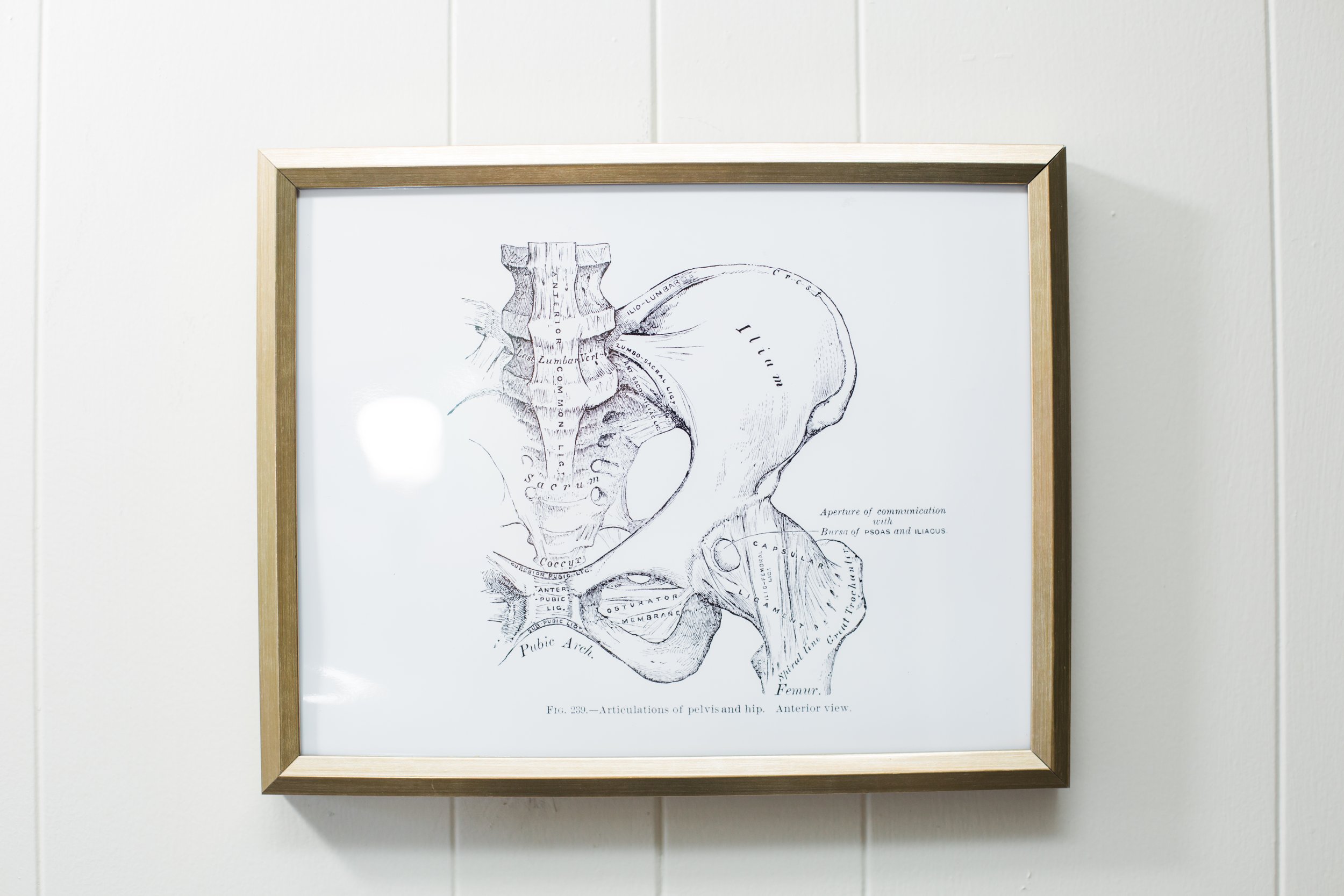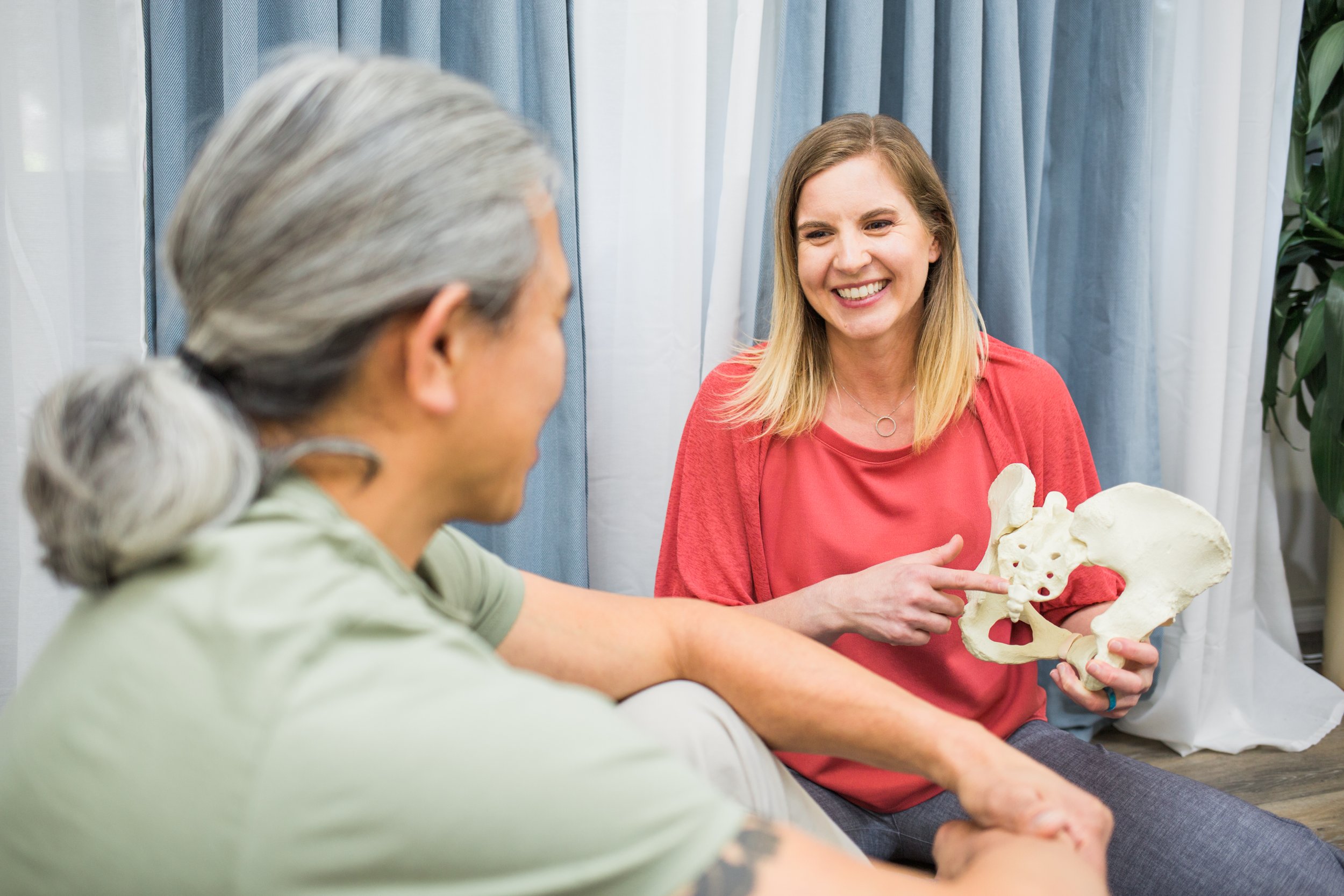
What We Treat
Pregnancy and Postpartum
During pregnancy, the body undergoes significant changes that can affect the pelvic floor muscles. Physical therapy can help manage symptoms like pelvic girdle pain, lower back pain, and urinary incontinence. Postpartum, the focus shifts to recovery and strengthening the pelvic floor to address issues like muscle weakness, diastasis recti (separation of abdominal muscles), and incontinence.
Pelvic Pain
Chronic pelvic pain can arise from various conditions such as endometriosis, interstitial cystitis, or pelvic floor muscle tension. A pelvic floor therapist will assess the cause of pain and provide targeted treatment, which may include manual therapy to release muscle tension, specific exercises to strengthen or relax pelvic muscles, and techniques to manage pain.
Bladder Dysfunction
This encompasses issues like urinary incontinence and overactive bladder. The therapist can offer strategies to improve bladder control, such as pelvic floor muscle training, bladder retraining exercises, and dietary advice to reduce bladder irritants.
Bowel Dysfunction
Conditions like constipation, fecal incontinence, and irritable bowel syndrome (IBS) can be addressed. Treatment may focus on pelvic floor muscle coordination during bowel movements, dietary changes, and exercises to improve bowel control.
Sexual Dysfunction
This can include pain during intercourse, difficulty achieving orgasm, or erectile dysfunction. Therapy might involve relaxation techniques for pelvic muscles, desensitization exercises to reduce pain, and education about sexual health and function.
Pelvic Organ Prolapse
Prolapse occurs when pelvic organs drop due to weakened support structures. Physical therapy can help strengthen the muscles that support these organs, potentially delaying or preventing the need for surgery. Treatments can include kegel exercises, core strengthening, and posture correction.
Perimenopause and Menopause
Hormonal changes can lead to issues like vaginal weakening, incontinence, and pelvic pain. A therapist can provide exercises to strengthen the pelvic floor, advice on vaginal lubricants and moisturizers, and strategies to manage other menopausal symptoms.
Male Pelvic Pain
Common issues include chronic prostatitis, erectile dysfunction, and post-prostatectomy incontinence. Treatment often involves exercises to relax or strengthen pelvic floor muscles, manual therapy, and education on pain management.
Pediatric Pelvic Health
Children may experience bedwetting, daytime incontinence, or constipation. Pelvic floor therapy for children often includes exercises to improve bladder and bowel control, behavioral modifications, and education for both the child and parents.
Gender-Affirming Care
For individuals undergoing gender-affirming procedures, physical therapy can assist in managing any pelvic floor dysfunction and aid in recovery.
Surgical Prehab and Rehab
After surgeries affecting the pelvic area, physical therapy can play a crucial role in recovery, helping to restore function and manage pain.
Cyclists
Cyclists often experience pelvic floor problems due to the long duration of sitting and pressure exerted on the pelvic region while riding. This can lead to numbness, tingling, or pain in the pelvic area, including the perineum. Pelvic PT helps alleviate symptoms through manual therapy, ergonomic assessments and specific exercises.
And More!
Questions? Send us a message - we’re here for you!













